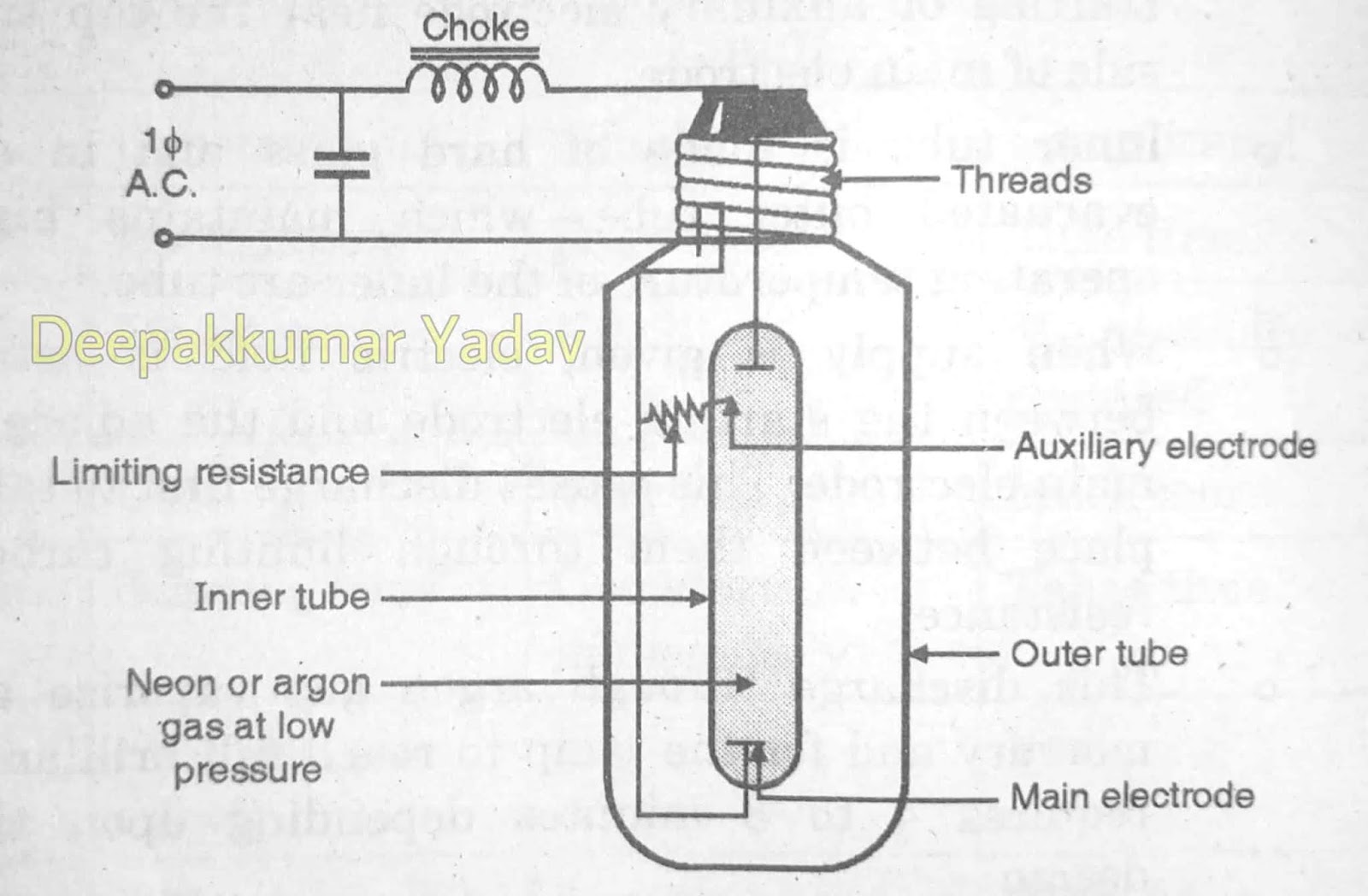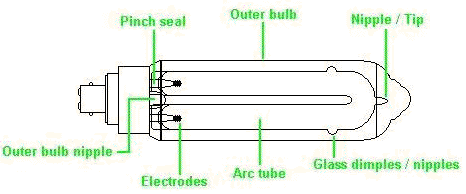One would tip the lamp and electrical contacts on each side of the lamp would send electricity through a liquid mercury which started the lamp.
Low pressure mercury vapour lamp diagram.
The first mercury vapor lamps were in a lower pressure tube.
In case of fluorescent lamp the mercury vapour pressure is maintained at lower level such that 60 of the total input energy gets converted into 253 7 nm single line.
In medium pressure mercury vapor lamps the lines from 200 600 nm are present.
In low pressure mercury vapor lamps only the lines at 184 nm and 254 nm are present.
Rather than a cold spot the lamp s amalgam spot on pellet regulates mercury vapor pressure during operation and yields up to three times the uvc output of a standard low pressure mercury lamp of the same length.
A sodium vapor lamp is a gas discharge lamp that uses sodium in an excited state to produce light at a characteristic wavelength near 589 nm.
As pressure increases the chance of multiple collisions gets increased.
The lamps can be constructed to emit primarily in the uv a around 400 nm or uv c around.
Fused silica is used in the manufacturing to keep the 184 nm light from being absorbed.
Again transition of the electrons requires least amount of input energy from a colliding electron.
This coating covers more than 70 of the diameter of the lighted length of the lamp.
Amalgam lamps use a mercury amalgam mix to control mercury vapor pressure.




























